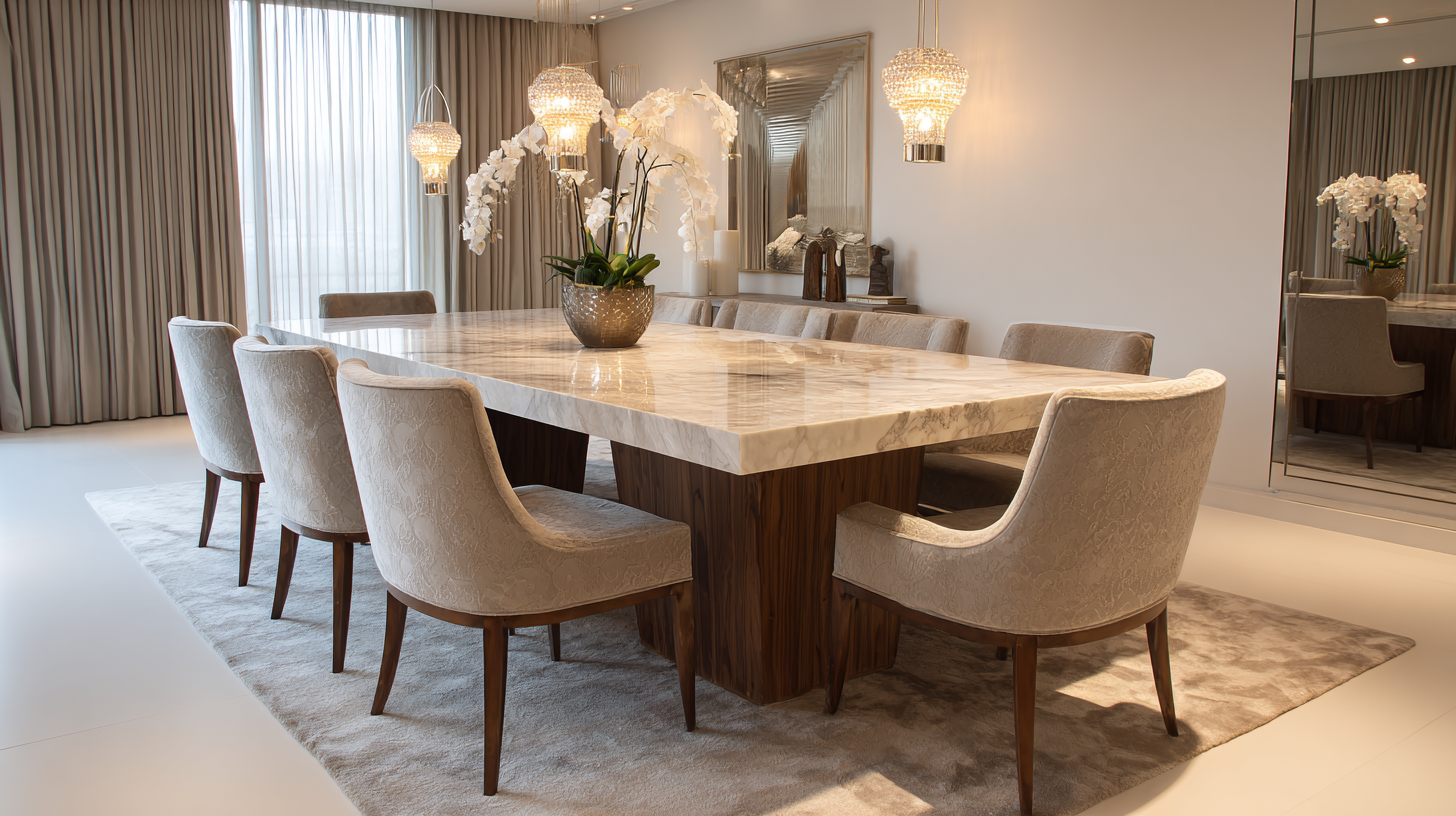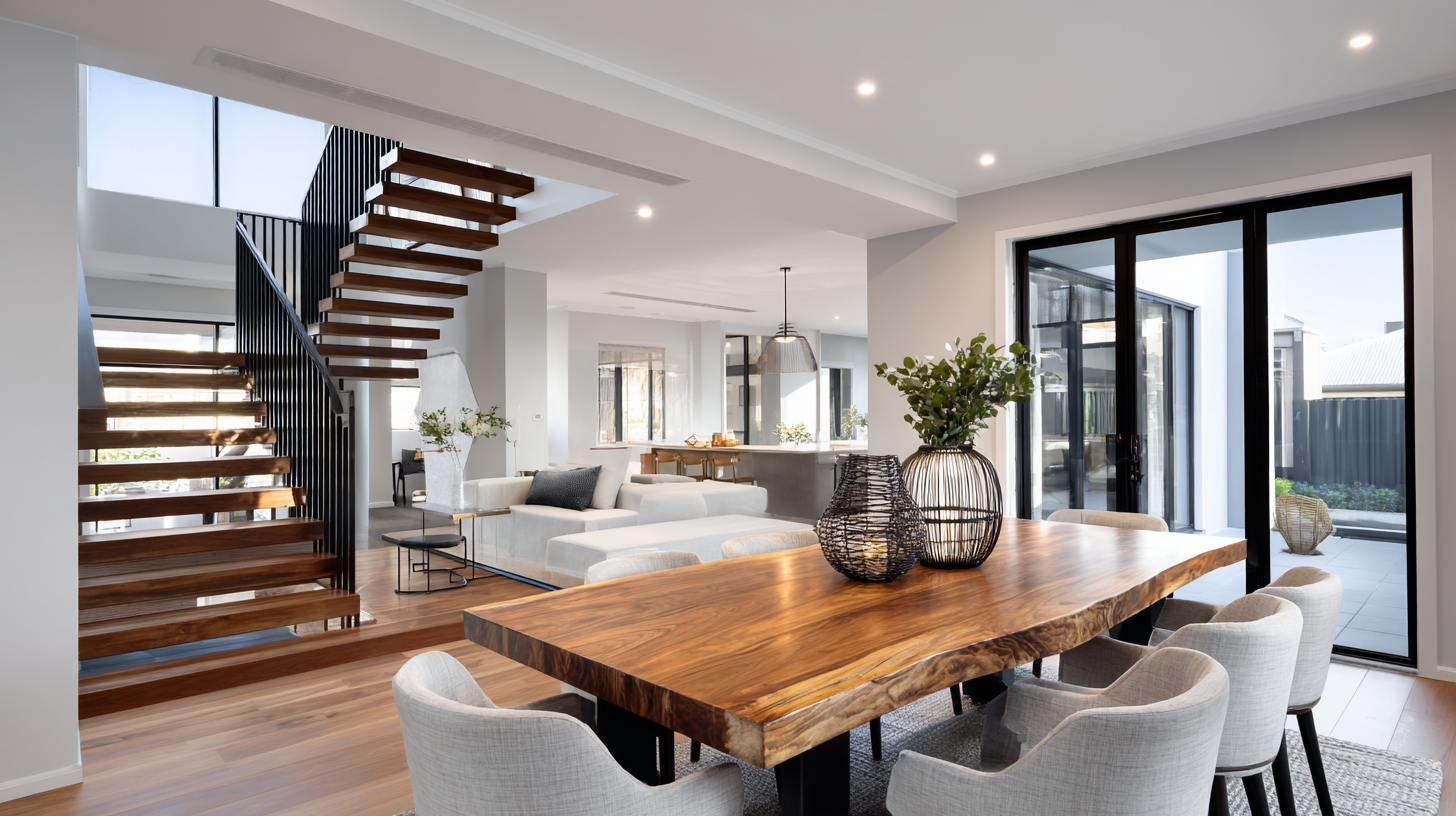When it comes to creating the perfect dining experience, choosing the right dining table is paramount. According to the National Kitchen & Bath Association, 60% of homeowners consider the dining table as the centerpiece of their dining area, highlighting its importance in both functionality and aesthetics. With an array of styles, sizes, and materials available, selecting the perfect dining table can significantly impact the overall ambiance of your home. A well-chosen table not only complements your interior design but also fosters quality family time, making it a key investment.

Current trends indicate that consumers are leaning towards multifunctional and sustainable materials, reflecting a growing desire for practicality and environmental consciousness in their dining spaces. This guide aims to navigate through the myriad of options, helping you find the ideal dining tables that align perfectly with your home style and personal preferences.
When selecting the perfect dining table for your home, understanding your unique aesthetic is paramount. Each home style embodies distinct characteristics that can guide your choice in furniture. For example, a mid-century modern home might call for a streamlined, functional design, perhaps featuring a warm wood finish, reminiscent of the 1950s Ranch House interiors that blend comfort with a touch of nostalgia. Meanwhile, an Art Deco-inspired space, celebrated for its bold yet sophisticated lines, could benefit from a table that shines with metallic accents and geometric shapes, capturing the essence of this enduring style.

In addition to identifying your home's aesthetic, consider how your dining table can serve as a central gathering point for family and friends. Whether you opt for a rustic farmhouse table that welcomes communal meals or a sleek minimalist piece that complements a contemporary design, your dining table should reflect both your taste and how you envision your living space. Ultimately, investing in a table is not just about style; it's about creating a functional centerpiece that enhances the overall ambiance of your home.
When choosing the perfect dining table, measuring your space accurately is fundamental to achieving aesthetic harmony and functionality. According to the American Home Furniture Association, the average dining table size ranges from 60 to 72 inches in length, which comfortably accommodates six people. However, a crucial aspect is to consider the room's dimensions and flow. Ideally, you should allow for 36 inches of clearance around the table for easy movement and accessibility. This ensures that dining experiences remain comfortable without feeling cramped.
Moreover, the shape of the table plays a significant role in spatial dynamics. Circular tables, for instance, can be remarkably beneficial in smaller areas, as they eliminate corners and allow for seamless movement. In contrast, rectangular tables are preferable for larger rooms, effectively maximizing seating without sacrificing comfort. As reported by the National Kitchen and Bath Association, nearly 60% of homeowners prioritize dining space functionality alongside aesthetic appeal. Therefore, when selecting your dining table, measuring both the table and your space is essential to strike the right balance between style and practicality, ensuring a perfect fit for your home’s unique design.
| Home Style | Table Shape | Recommended Size (Feet) | Material Suggestions |
|---|---|---|---|
| Modern | Rectangular | 6-8 | Glass, Metal |
| Rustic | Round | 4-6 | Wood, Reclaimed Materials |
| Industrial | Square | 5-7 | Metal, Plywood |
| Traditional | Oval | 6-8 | Hardwood, Mahogany |
| Contemporary | Rectangular | 5-7 | Laminate, Composite |
When it comes to selecting a dining table, the material you choose plays a crucial role in durability and style. Reports from the Home and Furniture Association indicate that around 65% of consumers prioritize material quality when shopping for dining tables. The right material not only enhances the aesthetic appeal of your home but also dictates the longevity of your investment.
Solid wood remains a top choice for many homeowners due to its timeless design and exceptional durability, with species like oak and walnut ranking high in popularity. According to a survey by Furniture Today, solid wood tables can last over a decade with proper care, while engineered wood options, although more affordable, typically offer a lifespan of 5 to 7 years. On the other hand, materials like glass and metal are gaining traction for their modern look and versatility. A study from the Institute of Home Design shows that glass-topped tables have increased in demand by 20% over the past three years, appealing to those seeking a contemporary touch.
Ultimately, selecting the right dining table material not only reflects your personal style but also ensures that your space remains functional and stylish for years to come.
When selecting the ideal dining table shape for your space, consider the dimensions of your room and how you intend to use the table. Round tables are excellent for smaller spaces as they promote intimacy and easy movement. They also work well for informal dining setups, allowing everyone to engage comfortably. Conversely, rectangular tables are perfect for larger areas, providing ample surface space for dining and entertaining.
Tips: When choosing a round table, opt for one that can extend, accommodating guests during gatherings while saving space on an everyday basis. For rectangular tables, ensure there is enough space around the table for chairs and foot traffic—ideally, leave at least 36 inches for easy movement.
Additionally, square tables can bring balance to a square dining room, offering a modern touch. These tables work wonderfully in a cozy atmosphere and can easily fit into smaller areas. However, if you frequently host larger groups, investing in a modular square/rectangular table may offer the versatility you need.
Tips: Always measure your space before purchasing to ensure the table fits smoothly within the room's layout and enhances the overall flow of the space.
 When selecting the perfect dining table for your home, it’s essential to consider how it harmonizes with your existing decor and seating choices. A well-coordinated dining area not only enhances the aesthetic appeal of your home but also creates an inviting atmosphere for family and guests. Start by evaluating the style of your dining room—whether it’s modern, traditional, or eclectic—and choose a table that complements that theme.
When selecting the perfect dining table for your home, it’s essential to consider how it harmonizes with your existing decor and seating choices. A well-coordinated dining area not only enhances the aesthetic appeal of your home but also creates an inviting atmosphere for family and guests. Start by evaluating the style of your dining room—whether it’s modern, traditional, or eclectic—and choose a table that complements that theme.
Tips: Look for tables in materials and finishes that match your other furnishings. For instance, a sleek metal table works beautifully in a contemporary space, while a rustic wooden table can elevate a farmhouse-style decor.
Next, consider your seating options. The right chairs should balance the table's size and style. If you have a round dining table, opt for a set of chairs that adds height and dimension. Conversely, for a long rectangular table, mix and match seating styles for a more casual, welcoming vibe.
Tips: Adding cushions or throws in complementary colors not only enhances comfort but also ties together the overall look. Don’t shy away from experimenting with textures, like pairing a polished table with upholstered chairs for a dynamic contrast.






